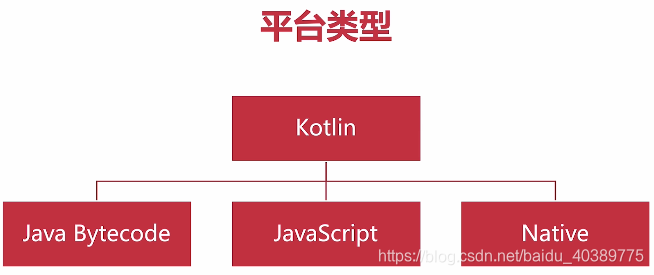类
默认为 pulic
class Two {
var x:Int = 0;//必须初始化
//构造方法
constructor(x:Int){
this.x = x
}
//定义方法
fun y(){
}
}
简写
class Two(var x: Int) {
var y: Int = x
}
class A(var y: Int) {
}
class B(var x: Int, var y: String) {
}
fun main() {
val two = Two(1)
println(two.y + two.x)
val a = A(3)
println(a.y)
val b = B(3, "hello")
println(b.y + " " + b.x)
}
接口
interface SimpleInf {
val x: Int
var y: Int
fun simpleMethod()
}
class Two() : SimpleInf {
//实现 接口中的参数,因为是可读,所以必须 + get 方法
override val x: Int = 0
get() {
return field
}
override var y: Int = 10
get() {
return field
}
set(value) {
field = value
}
//必须写 override
override fun simpleMethod() {
println(x)
println(y)
}
}
//在构造方法中直接初始化 接口中的变量
class A(override val x: Int, override var y: Int) : SimpleInf {
override fun simpleMethod() {
println(x)
println(y)
}
}
fun main() {
val t = Two()
t.simpleMethod() // 0 ,10
//获取属性引用
val g = t::y
g.set(5)
println(t.simpleMethod()) //0 ,5
val a = A(3, 3)
a.simpleMethod() //3 ,3
}
抽象类
abstract class Two {
abstract fun abs()
//方法默认不可复写需要复写则需要加 open 关键字
open fun over() {
}
//不可复写
fun non() {
}
}
class A : Two() {
override fun abs() {
TODO("not implemented") //To change body of created functions use File | Settings | File Templates.
}
override fun over() {
super.over()
}
//non 方法不能重写
}
类继承
open class Two {
open fun a() {}
open fun b() {}
fun c() {}
}
//继承的类必须加 Open
open class A : Two() {
//重写的方法必须是 open
override fun a() {
super.a()
}
//将重写类方法变为不可重写
final override fun b() {
super.b()
}
}
class B : A() {
override fun a() {
super.a()
}
}
属性
Kt 中不需要我们定义 get / 和 set 方法,就算是定义了,使用的时候也是通过 类.属性的方式来读写,而不是 get / set,如下
class Persion {
var name: String = ""
get() {
return field //field 表示 属性:name
}
set(value) {
field = value //设置 value
}
// get 和 set 推荐不用写
var age: Int = 0
}
fun main() {
val p = Persion()
println(p.name)
println(p.age)
}
扩展方法/属性
fun main() {
val s = String::setEmail
val s1: (String, String) -> String = String::setEmail
val fiel = PoorGuy::moneyLeft
var fiel1: KMutableProperty1<PoorGuy, Double> = PoorGuy::pocket
}
class PoorGuy {
var pocket: Double = 0.0
}
//扩展方法
fun PoorGuy.noMoney() {
}
//扩展属性
var PoorGuy.moneyLeft: Double
get() {
return pocket;
}
set(value) {
pocket = value
}
//扩展 String 类方法
fun String.setEmail(s: String): String {
return "${s}@163.com"
}
某个类的扩展方法如果定义在别的类中:
class D2 {
fun Class<D1>.set() {
}
}
如何调用呢,如下:
class D2 {
fun Class<D1>.set() {
}
//在内部调用
fun X() {
D1().javaClass.set()
}
}
fun main() {
//其实 run 也是一个扩展方法
D2().run {
D1().javaClass.set()
}
}
空类型安全的概念
var nonNull:String = "hello"
// nonNull = null
//不可空类型
任何 类型在类型后面+?即为可 null
var nonNull: String? = "hello"
val length = nonNull!!.length //强转为 Null
val l = nonNull?.length //nonNull 如果为 null,则 l 也为 null,否则返回对应的长度
那 如果 l 也 为 null 呢?可以采用如下方式:
val x: Int = nonNull?.length ?: 0 //elvis 表达式,表达式为 null 返回 0
空类型继承关系
fun main() {
var x: String = "Hello"
var y: String? = "World"
x = y //类型不匹配
y = x //Ok ,根据李氏替换原则就可知道 String 应该是 String?的子类
//里氏替换原则说:任何基类可以出现的的地方,子类一定可以出现
// 也就是子类在一切场景下都可以替换他的父类
//例如 Int 是 Number 的子类
var a: Int = 2;
var b: Number = 2;
a = b; //类型不匹配
b = a;
//从上面就可以看出 String 应该是 String?子类
}
平台类型

Kt 代码可以编译为字节码类型,还有 JavaScript ,Natvie。。
智能类型转换
fun main() {
val k: KotLiner = Person()
// is 等价于 instanceof,判断一个类型是否为一个类型
if (k is Person) {
//智能转换为 Person
println(k.name)
}
}
类型的安全转换
println((k as? Person)?.name)
转换 成功,就会得到 Person 类型,否则就是 null
例子
使用 Retrofit 发送一个网络请求
首先,加一下依赖
implementation 'com.squareup.retrofit2:retrofit:2.6.2'
implementation 'com.squareup.retrofit2:converter-gson:2.6.2'
implementation 'com.google.code.gson:gson:2.8.1'
接着发送请求:
interface Api {
// Retrofit
@GET("/repos/{owner}/{repo}")
fun getRepository(@Path("owner") owner: String, @Path("repo") repo: String): Call<Repository>
}
fun main() {
val api = Retrofit.Builder().baseUrl("https://api.github.com")
.addConverterFactory(GsonConverterFactory.create())
.build()
.create(Api::class.java)
val response = api.getRepository("Jetbrains", "kotlin").execute()
val repository = response.body()
if (repository == null) {
println("Error!{${response.code()} - ${response.message()}")
} else {
println(repository.name)
println(repository.owner.login)
println(repository.stargazers_count)
println(repository.forks_count)
//生成一个文件
File("Kotlin.html").writeText(
"""
<!DOCTYPE html>
<html>
<head>
<meta charset="UTF-8">
<title>${repository.owner.login} - ${repository.owner.login} - ${repository.name}</title>
</head>
<body>
<h1> <a href = '${repository.html_url}'>${repository.owner.login}-${repository.name}</a></h1>
<p>${repository.description}</p>
<p>Start:${repository.stargazers_count}</p>
<p>Forks:${repository.forks_count}</p>
</body>
</html>
""".trimIndent()
)
}
}
//结果
kotlin
JetBrains
30195
3602
总结
-
类和接口
-
类:实例化不用写 new ,方法,类被继承或者重写必须加上 open 关键字,构造器可以写在类后面
-
接口
-
抽象类:基本和上面的差不多,override 作为关键字使用,而不是注解
-
属性:field+getter+setter,不需要手动的 get / set。属性引用
-
-
扩展方法
- 定义方法
- 方法/函数引用,在方法签名+类,函数引用,直接 :: 函数
-
空类型安全
- 可空类型为不可空类型的父类。Kt 中声明类型的时候就可以明确的告诉编译器类型是否可以为 null,如果不可为 null,编译器就会有权利要求你不能给他赋值为 null
- 运算符
- !! :强制转换为不可空 类型
- ?. :安全调用成员,如果不确定是否为空,可以使用这种方式,如果为 null,整个表达式返回 null,
- ?: :上述如果表达式返回 null 可以使用 ?: 返回一个默认值
- 平台类型
- Java 虚拟机上就是 java 原生类型
- javaScript 上就是 javaScript 的类型
- Native 则是 C 对应的类型
-
智能类型替换
-
A as B 类型转换
-
A as? B 安全类型转换,失败返回 null
-
只能类型转换的适用场景
-
-
Retrofit 发送网络请求
- 使用 Java 的第三方框架
- 使用 KotLin 的文件扩展写文件
- 使用 Raw 字符串
建议
- 尽可能使用 val 声明不可变引用,让程序的含义更加清晰确定
- 尽可能减少对外部变量的访问,也为函数式编程提供基础
- 必要时创建局部的变量指向外部,避免因它的变化引起程序错误
这种方式,如果为 null,整个表达式返回 null,
- ?: :上述如果表达式返回 null 可以使用 ?: 返回一个默认值
-
平台类型
- Java 虚拟机上就是 java 原生类型
- javaScript 上就是 javaScript 的类型
- Native 则是 C 对应的类型
-
智能类型替换
-
A as B 类型转换
-
A as? B 安全类型转换,失败返回 null
-
只能类型转换的适用场景
-
-
Retrofit 发送网络请求
- 使用 Java 的第三方框架
- 使用 KotLin 的文件扩展写文件
- 使用 Raw 字符串
参考自慕课网 Kotlin 从入门到精通
